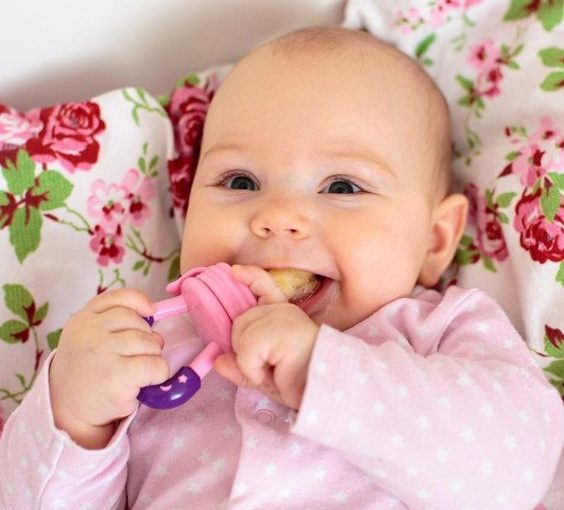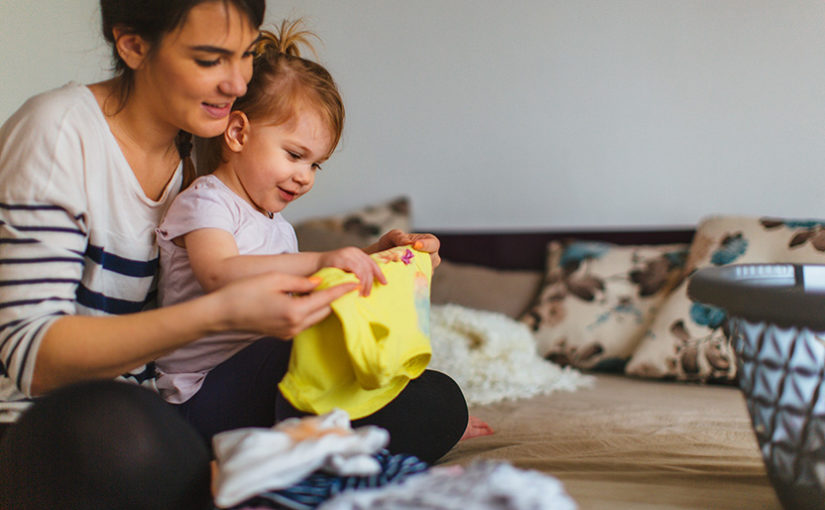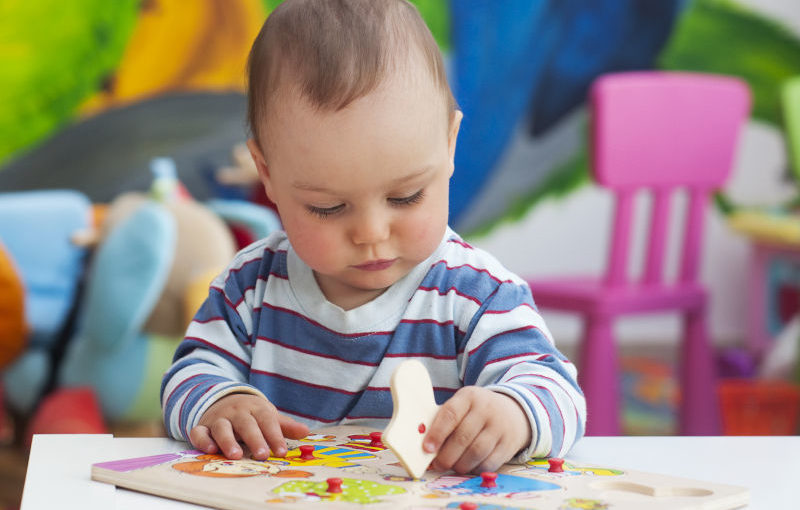Around the same time babies begin to teethe, they begin to their first foods. Also, they begin to make more sounds. Feeding and speech development are closely related! They compliment each other and each milestone your baby meets in one area, s/he should meet another milestone in the other area. Once your baby shows interest in putting objects in their mouths, you can present them opportunities to explore tastes and textures of the foods you eat. You can do this safely with the use of baby food feeders(mesh or silicone)that are found in the baby section of many stores, or on line by searching for “baby safe feeders”. Starting with vegetables and fruits that your baby has already shown no allergy or sensitivity to can give them new tastes and textures to explore, while helping them learn to move their tongue, lips, and jaw in a variety of directions to develop the coordination needed for emerging speech sounds. You will begin to hear them makes sounds while they are exploring that you can imitate back to them, creating a socially enjoyable experience and connection with you as their feeder. Imitation of the actions occurring in their mouths while feeding is as important as the imitation of sounds that naturally occur as they move their mouths. Your baby will learn the difference of the sounds they can make while their lips are closed(mmmmm) or when their mouths are open with their tongues down(gagaga). Giving your baby early experiences with a variety of tastes and textures could lead to decreased protest of new tastes and textures as they grow. In addition to these feeders giving your baby opportunities to explore new foods, it can be useful for those painful teeth coming in! Place fruits or veggies in the freezer and place them in the feeder for some tasty relief😉. You will also be teaching your child about different temperatures of foods this way! Always consult with your pediatrician or early interventionist when moving from purees to solids, even if presented in a safe way with the use of these feeders.
Month: November 2020
LET’S DO LAUNDRY!
Laundry. One of my least favorite chores. It has to be done though so why not make it a learning experience while you get the kiddos to help! While it may make the process twice as long, your young children can build vocabulary as you name the clothing you are putting in the washer or dryer, or as you’re folding. If they are helping to load, you can also expand to model word combinations(Pants in! or Go in!). When the clothes are dry, even small children can follow directions to find certain items, learning to sort(All the socks go here). When they begin to match, they can match all the socks for you! You can also attach possession to clothing and help them learn “my” vs “your” or “Daddy’s and Mommy’s”. Labeling colors is also a great way to expand on naming the clothing as they get closer to preschool(Blue shirt). This monotonous activity can be such a great natural learning experience, and they are helping you with chores!
Words/Sounds to include: shirt, pants, socks, shorts, underwear, in, out, wet, dry, my, your, colors, etc.
PUZZLE PLAY
With the holidays coming quickly, the one question I get frequently is what toys will help children learn and increase their speech and language skills. My answer is always “Keep it simple!”. It doesn’t need to have buttons/switches to make it talk or light up. The most important thing is that they are engaging with their child(ren) throughout the day in some way. I’ve already included a few toys that have been around forever that are great ways for children to learn many concepts. Puzzles are another great example. When they are small, children can learn fine motor skills with knob/peg puzzles, cognitive skills as they learn to match the picture to the puzzle piece, as well as problem solving skills when they learn to fit the pieces in the right spot. In addition, they will be building memory while they practice over and over again. How can they learn speech and language? You can label the pieces for them, model certain sounds the pieces may make(Cow-moo, Car-vroom), ask them where a certain piece is so they are identifying, and eventually ask them to label the piece by asking “What’s this?”. You can also model what they are doing when they practice putting it together(dump, in, out, turn, push, etc). Give them choices to pick which piece they want to put in as you hold them up(Do you want car or bus?). If you are holding the pieces, or they are taking them out of a bag you have put them in(since we all know how easy it is for those pieces to go missing😉), ask “Do you want more?” and help them to imitate “more”(sign or word). Even if you don’t have any puzzles, there are great resources out there to make your own! So, during this holiday season, remember KEEP IT SIMPLE!
Sounds/words to include: puzzle, names of pieces in the puzzle, animal/environmental sounds, in, out, dump, turn, push, pull, more, all done


